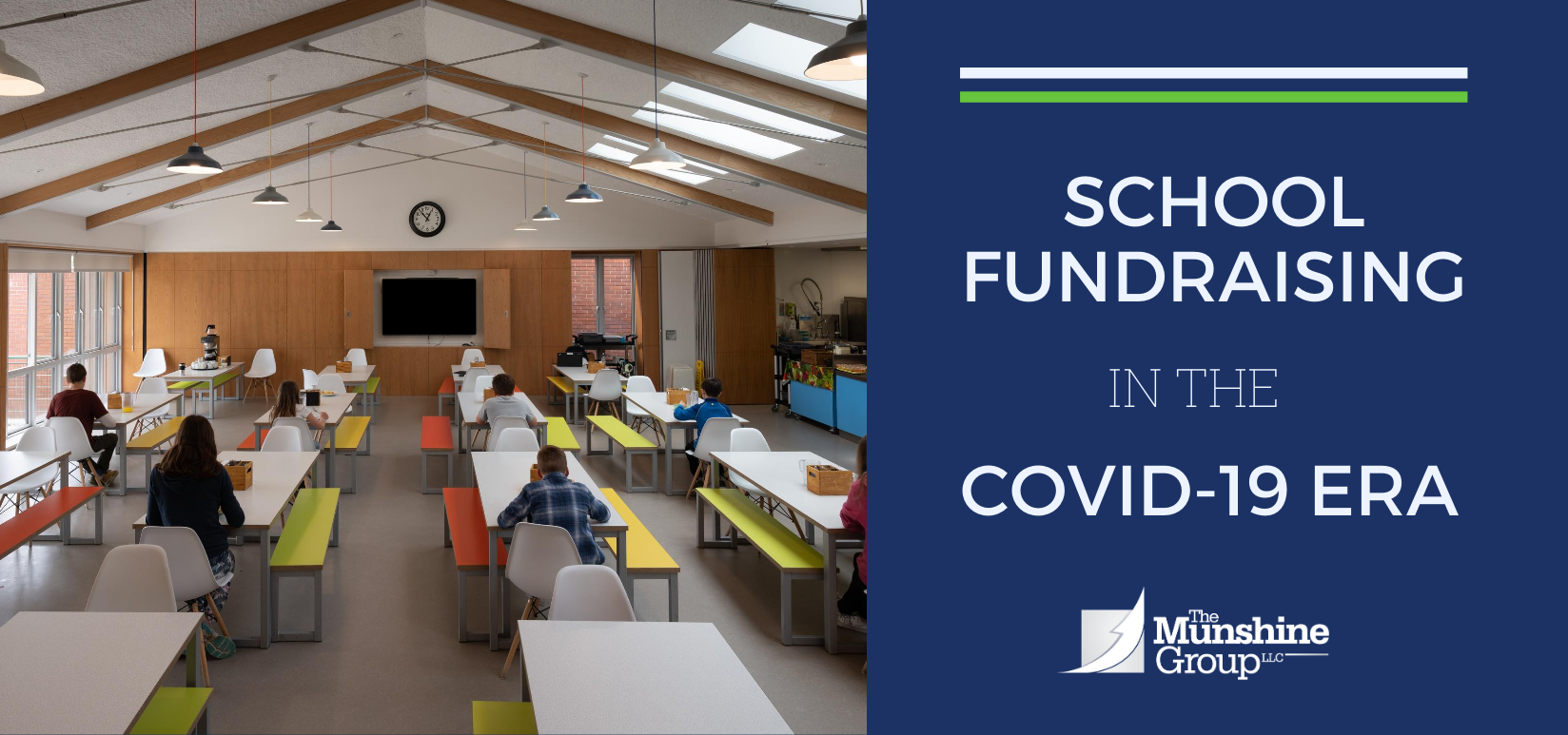Editor’s note: Across New Jersey and the country, schools, teachers, parents and communities are grappling with the difficult decision of how and when to safely begin the 2020-21 academic year. Even as the debate rages, fundraising work at independent schools goes on. As with almost every aspect of life, the COVID-19 pandemic is changing how money is being raised for nonprofit schools.
Months into life with the coronavirus, it often feels there are more questions than answers, and that is true for many independent schools. How do we keep our kids and teachers safe? What will classes look like when we reopen? How do we go about raising the money we need from parents, alumni and other donors — and what do “asks” for annual funds, endowments, major gifts and capital campaigns look like at this unprecedented time? While much has been written about this being uncharted territory, there are valuable insights to be gained from adjustments that are already being made, and there’s guidance that will strengthen fundraising going forward, even in the face of so much uncertainty.
The lessons from this past school year are important to consider as schools continue to adapt for the 2020-21 academic year. First, there is the reality of how remote learning, whether full-time or part-time, impacts so many children and families. The New Jersey Department of Education estimates that across the state, 230,000 students either don’t have a computer or lack a reliable internet connection. For independent schools in New Jersey, which have more than 30,000 students enrolled, closing the digital divide by ensuring reliable internet connectivity and technology is a pressing issue as students learn online. This timely priority can be a key part of fundraising messaging, as well as overall communications and strategic efforts.
Our team has partnered with a number of independent schools to manage everything from fundraising to talent searches, including a school where more than half of students receive financial aid in the form of sliding scale tuition. These schools all believe in equitable access to education, and know that providing need-based tuition assistance is central to the mission of removing barriers to excellent education. During these difficult times, fundraising strategies are particularly important to support many families and enable schools to be accessible and inclusive for students of all backgrounds.
Going forward, building and nurturing relationships, engaging with the community, and developing fundraising strategies and goals might look different. But for schools and the students they educate, raising this money is more vital than ever. Our experience shows that there are, indeed, some road maps to help navigate this fundraising.
Virtual meetings with donors. Maintaining close ties with your donors is crucial for stewardship of your relationships, regardless of the circumstances. But as we’ve all seen by now, the ways we do that are changing. Handwritten notes and phone calls have made something of a resurgence, and in most cases, virtual meetings have had to take the place of in-person visits. Many development offices are finding these online meetings surprisingly effective, as donors have grown more comfortable connecting via video for conversations with organizations they support. While the acceptance of virtual meetings has grown in response to COVID-19, there are skills fundraisers need to sharpen and pitfalls to avoid. Key among them:
Don’t “assume Zoom.” While the popularity of Zoom has skyrocketed recently, there are other options including ones your donors might be more familiar or comfortable with. Whether it’s FaceTime, Skype, Google Hangout or something else, make sure you find out the platform that works best for your guest on any virtual fundraising meeting.
Familiarize yourself and your team with various ways of connecting, getting used to the technology in order to bring your best, most natural selves to any meeting. Along with being authentic, you’ll want to be inspiring. Virtual meetings might mean extra preparation, but presenting yourself and your organization in the most engaging light when you can’t meet face-to-face will be worth the effort. That might mean sending materials ahead of time that would usually be distributed in person, or sharing a limited amount of information live on your screen. Keep in mind that if the material has an ask, it’s usually advisable to not send that part in advance. Being ready and doing your homework have never mattered more.
People want to be engaged. Since the pandemic began, many independent schools have seen strong turnouts and responses for events that they were forced to hold virtually — everything from fundraisers and reunion weekends to faculty lectures and presentations. Another client of The Munshine Group’s pivoted to make a popular annual spring fling a virtual event. In the end, the school raised just as much as it typically does from the in-person fundraiser, proving that donors are willing to step up. We saw similar success at another independent school which was planning to hold an inaugural in-person fundraising event, including entertainment and a silent auction. The in-person event had to be scrapped, but more than 200 people attended the virtual version. Schools and other organizations are finding that some barriers that might have prevented people from coming to an in-person event, from travel to finding a babysitter, are no longer issues, and some attendees say they enjoy joining from the comfort of their couch in casual clothes with a glass of wine!
We’re also finding that there’s comfort in connecting with familiar faces and places in these challenging times and for many, that’s their alma mater. Donors and supporters are aware of the great need facing your school and now is the time to check in with them, conveying your gratitude for their contributions and excitement about welcoming them back to the school when it is safe to do so. While remaining sensitive to difficulties people might be experiencing, do not be afraid to make asks or let your donors know of other opportunities where help is needed. Without available in-person volunteer opportunities, donors who have spent time volunteering with your school may be searching for other ways to give back.
Evoke connections to the school. In addition to hosting virtual events, your development office can get creative with ways to engage your supporters. Designing virtual tours of campus can create feelings of nostalgia and foster connections. Videos including well-known buildings and landmarks can be the next best thing to an in-person visit. Right now is an ideal time to find new creative ways to reach out to donors. Whether that’s compiling video content of students, or including quotes from parents on the successes of the virtual classroom, stretching your communication channels can open new doors for your development team. Engaging supporters with emails or “snail mail” ensures they can read and absorb at their own pace. Email open rates and responses are, of course, easily measurable, while reply slips can be included in a mailed update or ask.
Enhance your annual fund. As highlighted by The Munshine Group in a previous post, “Fundraising Strategies for Independent Schools”, the annual fund is an essential tool for any independent school’s fundraising success. This could be an ideal time to strengthen your annual appeal, updating information on your impact and successes, highlighting needs, and rallying support for tuition assistance and other essentials. The effort put into improving communications about your annual fund also helps lay the groundwork for launching a capital or endowment campaign, and can identify future campaign and major donors.
Whether it’s education or any other nonprofit sector, The Munshine Group team is well-prepared to help your organization aim higher and achieve more. We’d welcome the opportunity to explore how we might work together, and to offer a complimentary initial consultation. Please reach us at contact@munshinegroup.com.


